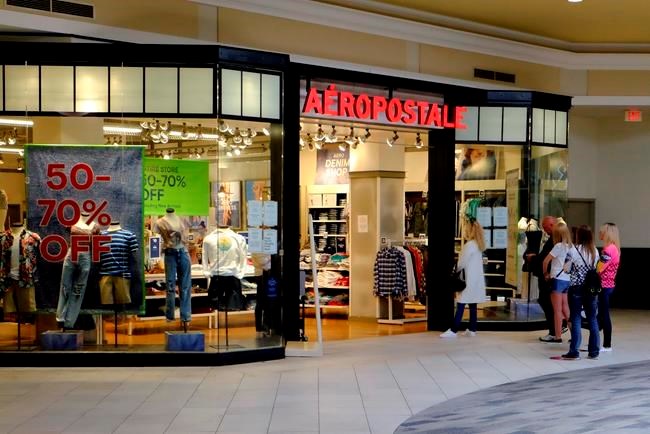TORONTO — Consumers should get ready for a new world of retail as indoor shopping mall operators across the country prepare to reopen their doors with an abundance of COVID-19 precautions in the coming weeks.
From the staff hired to manage the flow of people to new measures that include pre-ordering items, the traditional afternoon at the mall isn't going to look anything like it did before the pandemic. But at this point, mall owners say their priority is establishing clear guidelines that customers understand.
"The worst thing you can do is confuse people," said Jonathan Gitlin, president and chief operating officer of RioCan REIT, which owns indoor malls Burlington Centre and Yonge and Eglinton Centre in Toronto.
"People want to feel safe. They want to feel like they're in an organized environment."
Shopping centres in Manitoba were allowed to resume operations on May 4 under strict guidelines from local health officials, while other provinces are expected to follow with their own rules for how non-essential businesses should operate when they reopen.
Several mall operators spoke with The Canadian Press about the changes they're rolling out:
REDUCED HOURS
Getting shopping centres back on their feet will take significant time and effort, so expect truncated operating hours at most locations. Sal Iacono, executive vice president of operations at Cadillac Fairview, said the company's malls will run on shortened days which leave room for employees to review what needs improvement. Most locations will generally open a couple hours later, and close earlier than usual, to accommodate the changes. "Retailers will have to take time to properly prepare, retrain staff and remerchandise," he said.
Mall operators recommended that shoppers refer to their websites for the latest store hours.
CUSTOMER TRAFFIC
Forget wandering aimlessly around the mall under the new safety measures. The goal is to closely monitor the number of shoppers inside the building to prevent overcrowding, and keep everyone moving in a steady flow that avoids unnecessary criss-crossing of people. Floor decals with directions and additional staff hired to maintain the flow of traffic will keep the movement in check. Expect malls to designate some entrances solely for coming into the building while others will be reserved exclusively as exits. "If there's six or seven entrances currently, three will be entrances and three exits," Iacono said.
Inside the mall, retailers themselves will control how many shoppers walk into their store. Anyone who exceeds the maximum capacity will have to wait outside the storefront in a roped off line-up. It's one of the greater complexities of reopening malls, since none of these spaces were designed for the sheer volume of people waiting outside a store.
Those complexities might lead to innovations in the coming months, Iacono suggested, such as phone apps that provide expected wait times at certain stores, similar to the way crowd management is handled by theme parks at the most popular attractions.
Food courts will operate in a reduced capacity that discourages people from gathering for long periods of time. Some malls operators say they'll rope off parts of the seating to maintain physical distancing, while others have said in exceptional cases the food courts will be take-out only to prevent congregating.
MASKS AND GLOVES
Some grocery stores require shoppers to wear masks, but those rules won't apply at most malls. Instead, expect building management to stock each entrance with an abundance of hand sanitizer dispensers. "We can't impose upon our tenants, the retailers, to insist that face masks are worn in their stores," Gitlin said of RioCan's current policy. "What we'll do is encourage people to wear masks when they enter our shopping centres. But at this point, it's not our intention to deny entry for those who aren't."
Some retail analysts suggest malls could distribute gloves to shoppers, but that would be a costly endeavour that most — but not all — operators have ruled out. "At this point, we're still determining exactly what we're going to do in that regard," Gitlin said. "There shouldn't be reliance on every facility you visit to provide you with some of those basic protections."
Janitors will circulate through high-traffic areas frequently cleaning washrooms, doors, digital directories, hand rails, garbage cans, and elevator buttons. And expect to become acquainted with Plexiglas, as shopping centres owned by Ivanhoe Cambridge, which include Fairview Pointe-Claire in Montreal and CrossIron Mills in Rocky View, Alta., will install the protective layer at the guest services counter, said spokeswoman Katherine Roux Groleau.
CURBSIDE PICKUP
While many outdoor malls began offering curbside pickup weeks ago, the more traditional malls are expected to follow closely behind. RioCan announced it's rolling out a program it's dubbing Curbside Collect at its properties which designates sections of the parking lot where shoppers can pull up and collect pre-ordered items. "We think that this is an innovative way to adhere to the way in which consumers now will be shopping in at least the short term, but I also think for the long term," Gitlin said.
Other mall operators say they'll experiment will similar ideas, though ones located in downtown cores may struggle to manage vehicle traffic on city streets.
Follow @dfriend on Twitter.
David Friend, The Canadian Press
